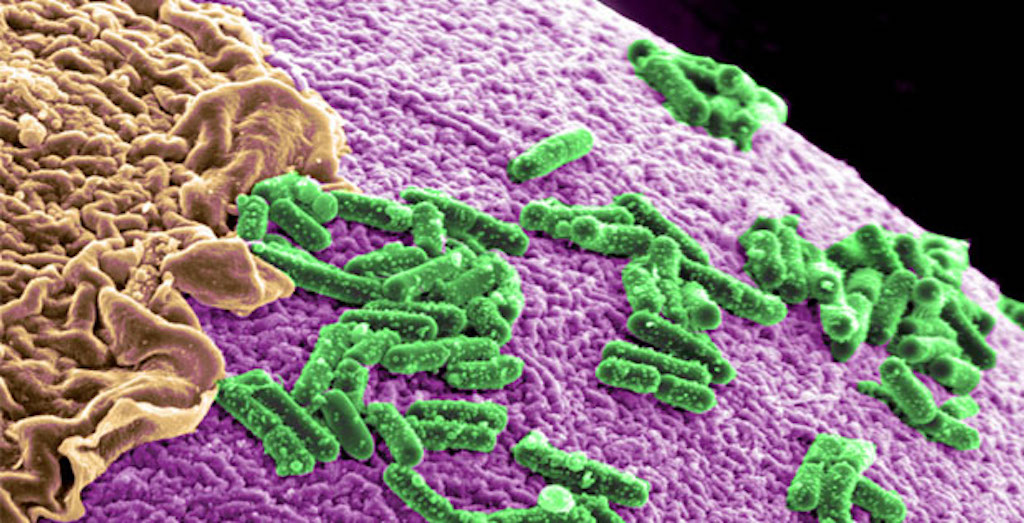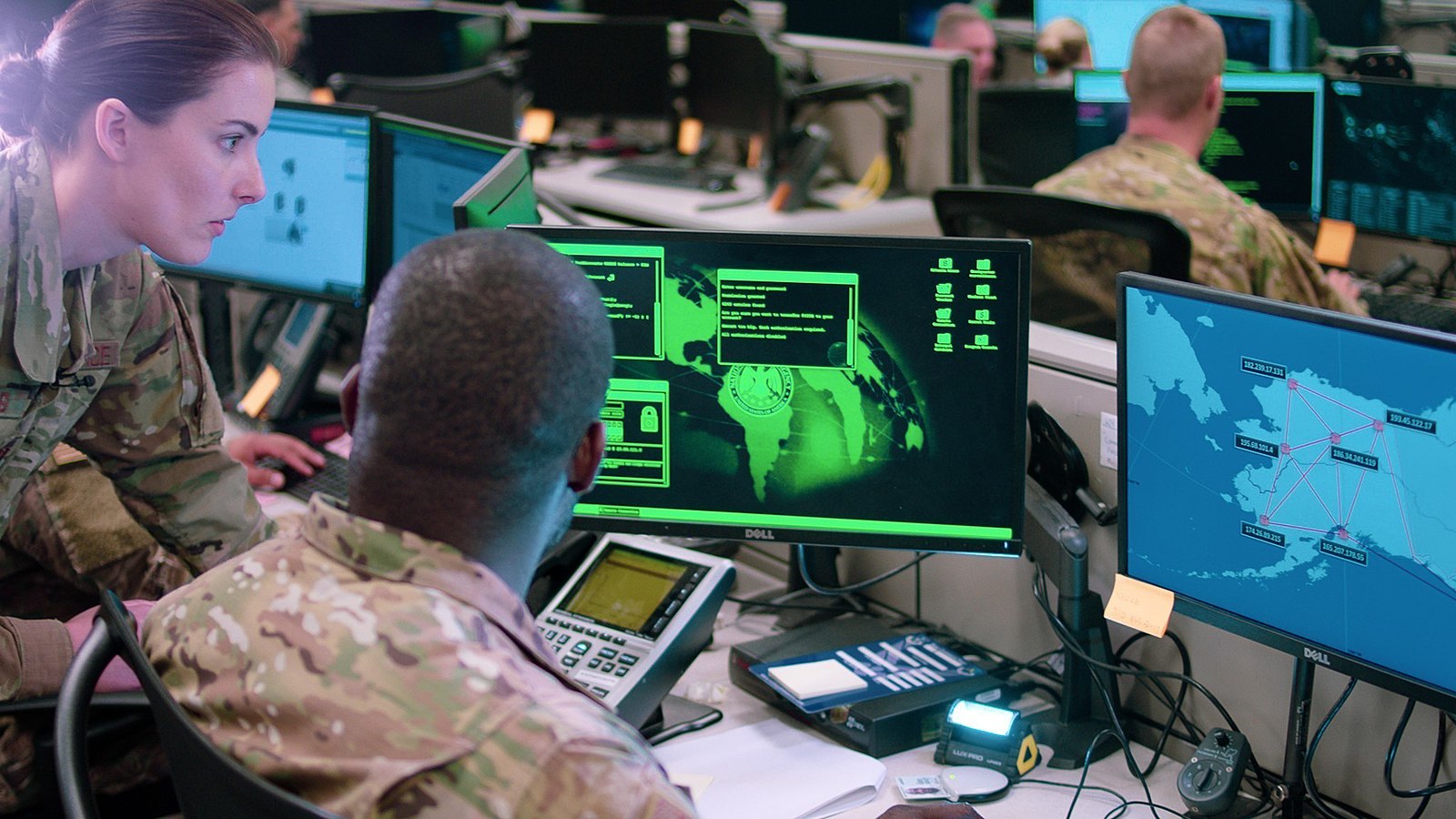Some Synthetic Biology May Not be Covered by the Biological Weapons Convention
While biological weapons are banned under both the law of armed conflict and the Biological Weapons Convention, what about SynBio weapons that defy the classic “biological” label?

Published by The Lawfare Institute
in Cooperation With

The study of viruses once challenged the world’s notion of what is “biological,” and for a time it was unclear whether viruses were regulated by the Biological Weapons Convention (BWC). Lying “at the edge of life,” viruses likely were not banned as a biological weapon until they were defined as a biological agent in 1969, more than 40 years after the first multilateral treaty prohibited biological warfare. Viruses infect their hosts by multiplying through living cells, many spreading disease from one person to another, like the current novel coronavirus causes COVID-19. While today viruses are considered to be an infectious biological agent and are categorically banned as a method of warfare, some types of synthetic biology (SynBio) may pose a similar dilemma and yet may not be covered by the same restrictions.
SynBio includes a host of technologies used to redesign organisms by engineering them to have new properties or abilities, or to use nonbiological materials that mimic biological effects, called biomimetics. While Article I of the BWC codifies the customary law prohibition against weaponizing biological material or pathogens, the agreement does not necessarily cover the development or employment of biomimetics, a dangerous subclass of SynBio. Such material may be weaponized into nonbiological agents that alter biological organisms, challenging the very definition of “biological material.” This scientific uncertainty has opened a lacunae in the law, and it is unclear whether the member states of the BWC can close it.
Biological Warfare
Government leaders worry about biological warfare in part because they see the devastation caused by natural disease. The coronavirus pandemic is just the most recent instance of a natural outbreak of disease causing devastation. Plague had a profound effect on European politics in the early Modern Period, and the 1918 Spanish flu disrupted armies of the Allies and Central Powers during World War I. The 1957 Asian flu pandemic killed 1.1 million people worldwide, including 116,000 Americans. More recently, MERS and Ebola devastated the Middle East and Africa. While medical science has made progress in preventing, treating and curing infectious disease, the coronavirus pandemic underscores the desperate race to stay ahead of pathogens. It appears the novel coronavirus was not developed as a biological weapon, but Secretary of State Mike Pompeo has suggested the virus may have leaked from a laboratory in Wuhan. This uncertainty highlights the difficulty in distinguishing between natural outbreaks, accidental release or perhaps even deliberate use.
The use of pathogens and toxins to kill the enemy likely dates to prehistory—archeologists believe members of some nomadic tribes covered the tips of their arrows with poisons obtained from plants and animals. Today major powers conduct defensive biological warfare research. Yet biological warfare between states has had remarkably little impact compared to other means and methods of warfare. This may be due to the ability of states to achieve their goals through conventional means, or the lack of desire to escalate to the use of unconventional weapons. Nonetheless, the potential for biological weapons to cause mass casualties remains a concern, which is why states seek arms control and nonproliferation agreements to control them.
SynBio promises a greater degree of control than traditional biological agents because artificially created, manipulated and enhanced pathogens—both bacterial and viral—could target specific demographic groups, including racial or ethnic communities or populations with specific genetic traits. Novel threat agents can be created that are not found in nature or are composed of inorganic materials. These pathogens may generate biological effects that impair functions, incapacitate or cause death. Eight years ago, for example, scientists were able to engineer the H5N1 virus, making it transmissible between humans through coughing or sneezing. In its natural form, the “bird flu” virus rarely infected or spread between humans. The New York Times called it an “engineered doomsday.” Scientists were also able to reconstruct from scratch a live polio virus; the 1918 Spanish flu virus; and horsepox, a relative of smallpox, using publicly available genetic information and mail ordering the DNA material.
If biotechnology advances in artificial gene synthesis converge with emerging military technologies, states will face greater risk of accidental release or even deliberate misuse of pathogens as a method or means of warfare. China, for example, invests heavily in biotechnology for commercial and medical gain. Yet, they may also be exploiting biotechnology for military application. Consider China’s interest in biotechnology for national defense. Qiao Liang and Wang Xiangsui, prominent Chinese military thinkers, contemplate biowarfare as a “new domain of warfare” and a legitimate method for conducting armed conflict “beyond the rules.” The chief physician at the People’s Liberation Army’s Third Military Medical University claimed that emerging biotechnologies will allow for “more direct and precise target[ing] at humans than other methods, which will play a more important role in future military operations.” He further suggested that emerging biotechnologies fall outside the scope of bans against biological weapons. In some cases, he may be correct as a matter of law. The Biological Weapons Convention restrains development or use of these tailor-made germs “that have no justification for prophylactic, protective or other peaceful purposes,” or as a method of war. Biomimetics may use nonbiological material to generate the same effects, such as death, disease or biological malfunction—perhaps outside the BWC.
Disarmament Obligations
In general, traditional biological weapons have been outlawed under international law through both treaties and customary international law. In 1969, prior to ratification of the BWC, President Richard Nixon affirmed that the “United States shall renounce the use of lethal biological agents and weapons, and all other methods of biological warfare.” The 1925 Geneva Protocol was the first multilateral treaty banning “the use of bacteriological methods of warfare.” By its own terms, the treaty banned the use of biological weapons during armed conflict. The United States ratified the 1925 Geneva Protocol in 1975, when it simultaneously ratified the BWC. While the 1925 Geneva Protocol focuses on prohibited use, the BWC expanded the use ban by prohibiting the development, production, stockpiling, acquiring or retaining of “microbial or other biological agents, or toxins whatever their origin or method of production, of types and in quantities that have no justification for prophylactic, protective or other peaceful purposes.” It essentially bans the use of biological materials for anything other than peaceful purposes. Yet whether the treaty applies to all SynBio applications is problematic.
In its broadest interpretation, the BWC “applies to all natural or artificially created or altered microbial or other biological agents or toxins whatever their origin or method of production.” This understanding was initially derived from the Final Document of the BWC’s Second Review Conference in 1986. Bulgaria and the German Democratic Republic submitted a proposal that noted “apprehension” arising from advances in biotechnology that “may lead to the creation of new pathogenic microorganisms and toxins” with military application. They wanted affirmation that the BWC also covered “artificially created pathogenic microorganisms” even though the text of Article I of the BWC does not reference synthetically or artificially created or altered biological agents. This broader understanding was agreed to by consensus, including the United States, at the close of the meeting and further reaffirmed at the Third, Fourth, Sixth and Seventh Review Conferences. Such declarations are not legally binding, however, as they are not part of the formal amendment and revision process. Yet these statements are an authoritative source of interpretation as a “subsequent agreement between the parties regarding interpretation of the treaty,” under Article 31(3) of the Vienna Convention on the Law of Treaties (VCLT). While the United States has not ratified the VCLT, it considers many of the convention’s provisions as reflecting customary international law.
Assuming the BWC covers all synthetically or artificially created or altered biological agents, how is a biological agent defined? The BWC does not provide a specific definition, except the Article I text “microbial or other biological agents, or toxins.” In 1969, the U.N. General Assembly defined biological agents as “living organisms, whatever their nature, or infective material derived from them—which are intended to cause disease or death in man, animals, or plants, and which depend for their effects on their ability to multiply in the person, animal or plant attacked.” In the United States, the BWC was implemented through the Biological Weapons Anti-Terrorism Act of 1989, which currently defines biological agents as
any microorganism (including, but not limited to, bacteria, viruses, fungi, rickettsiae or protozoa), or infectious substance, or any naturally occurring, bioengineered or synthesized component of any such microorganism or infectious substance, capable of causing … death, disease, or other biological malfunction in a human, an animal, a plant, or another living organism.
Using these broad definitions, the ban on weaponized biological agents likely includes all biological materials whether they are naturally occurring pathogens, modified or manipulated existing organisms, or artificially created in a lab from scratch. But SynBio agents in combination with rapidly developing technologies, such as CRISPR/Cas9 genome-editing, nanotechnology and biomimetics, are not limited to biological material or applications.
Consider biomimetics. There continue to be advances and exponential growth in research in this area, with the potential to create novel, artificial nonbiological materials that mimic biological effects that impair specific biological functions for malign purposes. Such biomanipulation is exactly what Col. Guo Ji-wei and Xue-sen Yang envisioned: the creation of novel threat agents that are able to target groups or individuals based on their biological features and cause incapacitating effects, and it could include creation of a nonbiological weapon designed to react with the specific genome of a national leader, such as the president of the United States. These advances in SynBio and emerging technologies allow weaponization of novel, nonbiological threat agents, and they likely fall outside the scope of the BWC.
Even if states broadly interpret the advances in SynBio to include nonbiological threat agents, as prohibited under these treaties, the dual-use nature of the research magnifies the risks. Applications of SynBio are more accessible now than ever. There has been rapid expansion of research by states, the private sector, amateur biological groups and international organizations like the iGEM annual competition. Simply, the technology is accelerating faster than international law. Regardless of whether or not all aspects of SynBio are subject to a complete ban under the BWC and the 1925 Geneva Protocol, biotechnology continues to be an arena of state competition. Additionally, if the technologies become ubiquitous, even non-state actors will seek novel ways to wreak havoc on society. If the technology can be weaponized, it likely will be.
Means and Methods of Warfare
Regardless of whether certain SynBio applications fall outside the scope of the BWC and the 1925 Geneva Protocol, any use of such weapons is still subject to the law of armed conflict. The Martens Clause, which first appeared in the preamble to the 1899 Hague Convention and is further codified in the 1977 Additional Protocol I, established that any new weapon must be analyzed under the law of war to determine whether it is illegal per se (prohibited under all circumstances) or prohibited for certain uses. While classic biological weapons are the quintessential example of being illegal by their very nature, what about SynBio weapons that defy the “biological” label?
Generally, customary international law focuses on two fundamental prohibitions, namely, whether the weapon causes superfluous injury or is inherently indiscriminate. The superfluous injury rule found in Article 35(2) of the 1977 Additional Protocol I proscribes the employment of any weapon “of a nature to cause superfluous injury or unnecessary suffering.” While the United States has not ratified this treaty, the rule is considered customary international law and is referenced in treaties the United States is party to, such as the 1899 and 1907 Hague Regulations. The United States considers the phrase “calculated to cause superfluous injury” as more accurate. Regardless, the rule prohibits weapons designed to unnecessarily increase the injury or suffering of those attacked beyond what is justified by military necessity.
Certain applications of SynBio may be designed that do not violate the superfluous injury rule. As such, an all-encompassing per se ban based on superfluous injury seems doubtful. In fact, some applications may be more humane. For example, they may be more precisely targeted than other weapons, or they could be designed solely to incapacitate without causing physical injury or death. Other possible theories include SynBio weapons causing damage at the microscopic level without causing direct damage to tissues or organs. Instead, these weapons may impair other physiological functions without a threat to life, for instance, by reducing the ability of enemy soldiers to stay awake, maintain balance or perform basic motor skills. But even if certain applications were designed to kill a human target, they may not increase pain or suffering compared with other weapons.
The second fundamental prohibition—inherently indiscriminate weapons—derives from the principles of distinction and proportionality, which the United States considers customary international law. Distinction prohibits weapons, which, by their nature, cannot distinguish between combatants and the civilian population. While the United States is not a party to Additional Protocol I of the Geneva Convention, the customary rule is reflected in Article 51(4)(b) of that treaty and states that “indiscriminate attacks are … those which employ a method or means of combat which cannot be directed at a specific military objective.” The principle of proportionality bans weapons where the anticipated incidental effects are unnecessarily excessive compared to the military advantage expected to be gained from use of the weapon. Essentially, a weapon with uncontrollable effects would meet this definition. This rule has also been codified in Additional Protocol I in Article 51(4)(c).
Conclusion—Not Illegal Per Se
Traditional biological weapons are classic examples of indiscriminate weapons, as once they are released their spread is unpredictable and uncontrollable. This lack of discrimination is the most compelling reason why states banned such pathogens. Indeed, this reasoning likely applies to most SynBio weapons, which fall within Article I of the Biological Weapons Convention as well. Yet, SynBio also includes development of nonbiological materials that can imitate biological processes and responses, and these biomimetics appear not to fall within the BWC or the customary law it reflects.
While such SynBio applications may not be inherently unlawful or subject to current treaty ban, they could be used in a manner that is. In this context, the principles of the law of targeting—distinction, proportionality, military necessity and feasible precautions in the attack—will always govern how weapons are used. Technology may produce weapons offering even greater distinction since they can be designed to target specific combatants or groups of combatants based on precise traits or prescriptive attributes, such as occupation or even prior exposure to vaccines. These weapons would not be illegal during armed conflict per se. But their use would be subject to the rules that govern the conduct of hostilities and would be assessed on a case-by-case basis. In short, SynBio and its convergence with emerging technologies may create weapons not currently banned by universal disarmament obligations or customary international law, and this legal gap raises the prospect of weaponization of nonbiological threat agents tailor-made to create targeted effects. These tactical biotechnological capabilities could have potentially strategic consequences and yet may fall outside the existing regime.






